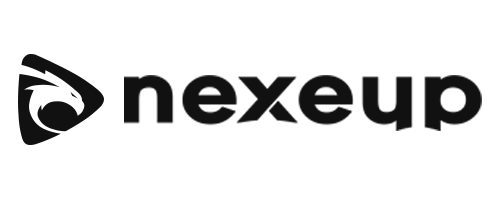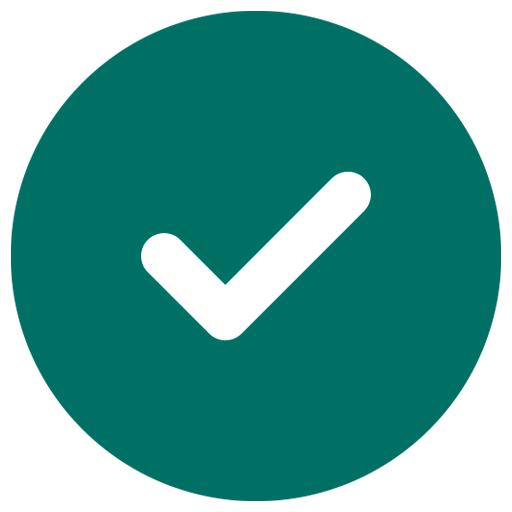Summary
- The text emphasizes developing and showcasing soft skills as crucial for standing out in the job market.
- It offers practical steps for integrating soft skill development into daily life and translating experiences onto resumes.
Building a strong set of soft skills isn’t just a nice-to-have—it’s your ticket to standing out in a crowded job market. Hiring managers pore over dozens, sometimes hundreds, of resumes for every posting. While technical prowess and certifications might land you an interview, it’s the people skills—empathy, communication, adaptability—that turn a candidate into a memorable, hireable asset. Below are five concrete ideas to develop and showcase soft skills on your resume, along with practical steps to integrate them into your daily life. Think of this as a roadmap: each idea isn’t simply a checkbox, but a meaningful way to grow as a professional and as a person.
1. Lead a Community Project: Cultivating Leadership and Initiative
Few experiences teach leadership as vividly as spearheading a community project. Whether it’s organizing a neighborhood cleanup, arranging a charity fundraiser, or coordinating a team to tutor underprivileged students, these endeavors force you to juggle multiple responsibilities, rally volunteers, and navigate unexpected hurdles.
How to get started. Look around: local libraries, schools, or non‑profits often welcome extra hands. Identify a cause you care about—clean water initiatives, literacy programs, environmental preservation—and reach out. Offer to coordinate logistics: book meeting spaces, draft timelines, set milestones. From the outset, you’ll hone planning, delegation, and conflict‑resolution skills.
Translating it to your résumé. Under a heading like “Leadership & Community Engagement,” list the project title, your role, the dates, and key achievements. For instance:
Project Lead, “Books for All” Tutoring Initiative
• Organized a team of 15 volunteers to deliver weekly literacy sessions over six months
• Developed training materials and schedules, increasing volunteer retention by 40%
• Raised $2,000 in local sponsorships to purchase reading materials for 100+ students
Quantifiable results—number of volunteers managed, funds raised, or participants reached—speak volumes. They demonstrate you don’t just claim leadership; you deliver impact.
2. Join a Public Speaking or Debate Group: Sharpening Communication and Confidence
Public speaking often ranks among people’s greatest fears, yet it’s one of the most prized business skills. Clear, persuasive communication underpins sales pitches, client meetings, and team updates. Joining a toastmasters club, debating society, or even an improv troupe can transform you from a hesitant speaker into a poised presenter.
How to get started. Search online for local Toastmasters chapters or debate clubs—many meet weekly or bi‑weekly and offer a welcoming atmosphere for beginners. If in‑person options are limited, virtual meet‑ups have proliferated since the pandemic, making it easier than ever to participate from home. Commit to attending regularly and volunteer to deliver speeches or serve in meeting roles like “Evaluator” or “Timer.”
Translating it to your résumé. Under a “Professional Development” or “Extracurricular Activities” section, include your membership, roles, and milestones. Example:
Member, Downtown Toastmasters Club
• Completed Competent Communicator track: delivered 10 prepared speeches and received actionable feedback
• Served as Vice President of Education: scheduled meetings, mentored 12 new members, and improved guest attendance by 25%
Again, focus on numbers—how many speeches, participants mentored, or improvements in attendance. These details illustrate growth and commitment.
3. Mentor or Teach Others: Demonstrating Empathy and Collaboration
Teaching isn’t just for classrooms. Mentorship programs, whether formal—like those at many big corporations—or informal, such as guiding a junior colleague, develop empathy, patience, and collaborative problem‑solving. As a mentor, you learn to tailor your communication style, listen actively, and help others achieve their goals.
How to get started. Internally at work: express interest in your company’s mentorship program, or simply ask a manager if you can shadow a newcomer. Externally: volunteer with youth organizations, coding bootcamps, or online platforms like Khan Academy. Even helping a friend build their first website or navigate a college application counts.
Translating it to your résumé. Create a distinct section like “Mentorship & Coaching.” For example:
Volunteer Mentor, TechUp Coding Bootcamp
• Guided 8 students through a 12‑week curriculum on JavaScript fundamentals
• Conducted weekly one‑on‑one sessions to troubleshoot code and set learning objectives
• Improved student pass rate from 70% to 95% through personalized feedback and goal tracking
By spotlighting the transformation—pass rates, projects completed, goals met—you show potential employers you can nurture talent and foster teamwork.
4. Participate in Cross‑Functional Teams: Building Adaptability and Problem‑Solving
In today’s fast‑paced workplaces, adaptability is non‑negotiable. Projects often span marketing, engineering, design, and customer service, requiring people to understand different perspectives and find common ground. Volunteering for or requesting placement on a cross‑functional team teaches you to decode jargon, negotiate priorities, and pivot when plans shift.
How to get started. If you’re already employed, watch for internal initiatives: product launches, process optimizations, or system migrations often rely on cross‑departmental collaboration. Offer your help, even if it means stretching beyond your comfort zone. If you’re a student, join hackathons or case‑study competitions, where teams combine diverse backgrounds to solve real‑world problems.
Translating it to your résumé. Under “Project Experience” or “Key Projects,” describe the team composition, your role, and the outcomes:
Team Member, CRM Implementation Task Force
• Collaborated with marketing, IT, and sales to migrate 10,000+ customer records with zero data loss
• Mapped process workflows, identified bottlenecks, and proposed automation that saved 15 hours of manual work weekly
• Led weekly cross‑departmental standups to ensure alignment and troubleshoot escalations
This entry shows you speak multiple “languages” (marketing metrics, technical specs, sales targets) and can adapt to varied working styles.
5. Embrace Continuous Feedback: Enhancing Self‑Awareness and Growth Mindset
Soft skills flourish when you invite honest feedback and act on it. Yet many shy away, fearing criticism. Cultivating a growth mindset—in which challenges are opportunities and feedback is a gift—requires deliberate practice. Seek feedback from peers, managers, or professors, and then implement changes, demonstrating accountability and resilience.
How to get started. Establish regular check‑ins: schedule monthly one‑on‑ones with a manager or a peer mentor and ask three targeted questions: What should I start doing? What should I stop doing? What should I continue doing? Take detailed notes, set SMART goals (Specific, Measurable, Achievable, Relevant, Time‑bound), and revisit them.
Translating it to your résumé. While you won’t list “I seek feedback” on a CV, you can frame your growth narrative in “Professional Summary” or under each role. For example:
Professional Summary:
Adaptable marketing coordinator with a growth‑oriented mindset—regularly solicits and integrates stakeholder feedback to optimize campaign performance, driving a 30% increase in engagement over six months.
Marketing Coordinator, BlueWave Media
• Instituted bi‑weekly feedback loops with design and analytics teams, leading to a 20% reduction in campaign revisions and faster time-to-market.
These descriptions tell a story of someone who learns, adapts, and continuously improves—qualities every employer values.
Bringing It All Together: Crafting an Authentic Soft‑Skills Narrative
Listing “communication,” “leadership,” or “teamwork” in a bullet point feels hollow unless backed by real experiences. The secret lies in weaving these five ideas into a cohesive narrative on your resume:
- Choose a clear format. Group experiences under headings like “Leadership & Community,” “Project Experience,” or “Professional Development.” This visually separates technical proficiencies from soft‑skills achievements.
- Use action verbs and metrics. Start bullets with verbs—organized, facilitated, implemented—and attach numbers wherever possible. Employers love specifics: “increased retention,” “reduced cycle time,” or “mentored X participants.”
- Tailor to the role. Scan the job description for keywords—collaboration, agile, client relations—and mirror that language in your achievement statements. If the posting emphasizes stakeholder management, highlight your cross‑functional experience.
- Keep it concise. Even with rich soft‑skill stories, your resume should remain a skim‑friendly document. Limit yourself to one or two lines per item; if an experience spans multiple skills, break it into separate bullets.
- Reinforce in your cover letter. Use your cover letter to briefly narrate one or two of these soft‑skills stories in first person, showing how they prepared you for this specific role.
Final Thoughts
Soft skills can’t be “acquired” through a weekend course or a quick checkbox on LinkedIn. They form through intentional practice, real‑world challenges, and a willingness to step outside your comfort zone. Volunteering to lead, speaking in front of strangers, mentoring peers, navigating cross‑departmental projects, and actively seeking feedback—they all build habits of empathy, resilience, and collaboration.
When you translate these stories into your resume, you move beyond buzzwords. Employers no longer see a list of abstract qualities; they see evidence of leadership in action, communication under pressure, and adaptability in diverse settings. Those are the people they want on their teams.
So pick one idea today—reach out to a local non‑profit, find a Toastmasters meeting, or ask a colleague if you can mentor them. Make a plan, track your progress, and don’t be afraid to share the outcomes. With each step, you’re not just enhancing your resume—you’re growing into the kind of professional who thrives in any environment. And that, more than any skill, is the hallmark of lasting career success.








These are fantastic and actionable ideas for developing soft skills. Engaging in community projects, joining speaking clubs, mentoring, and seeking feedback are all excellent ways to grow both personally and professionally. It’s inspiring to see how these experiences can be practically translated into a resume, making candidates stand out in the job market.